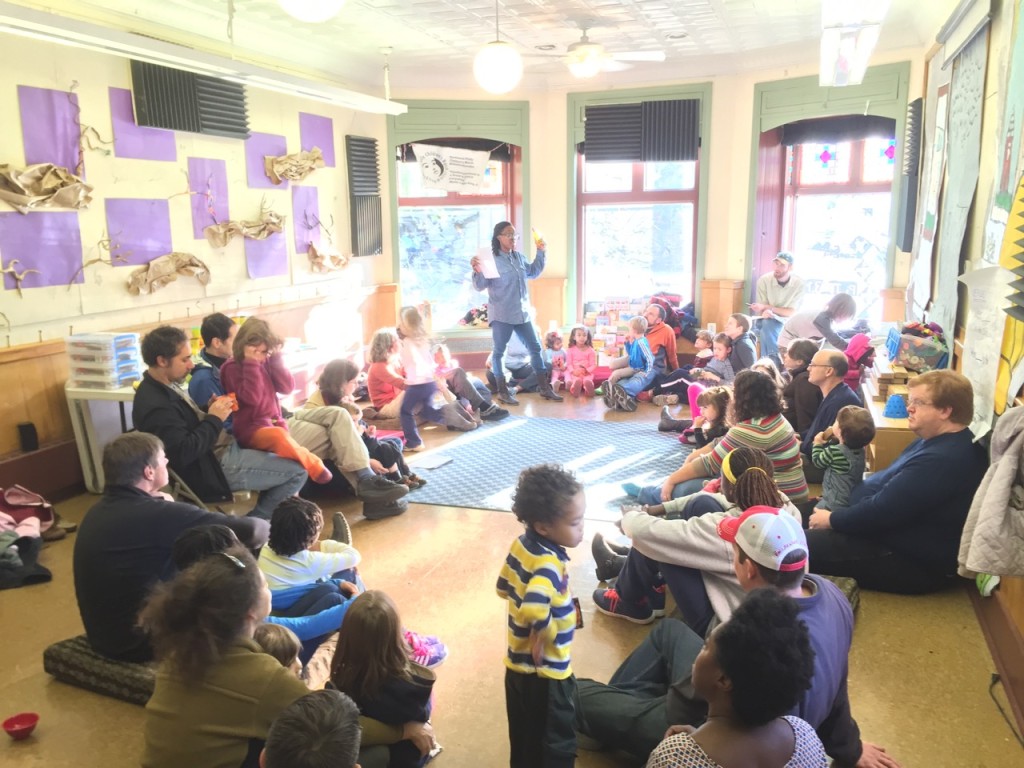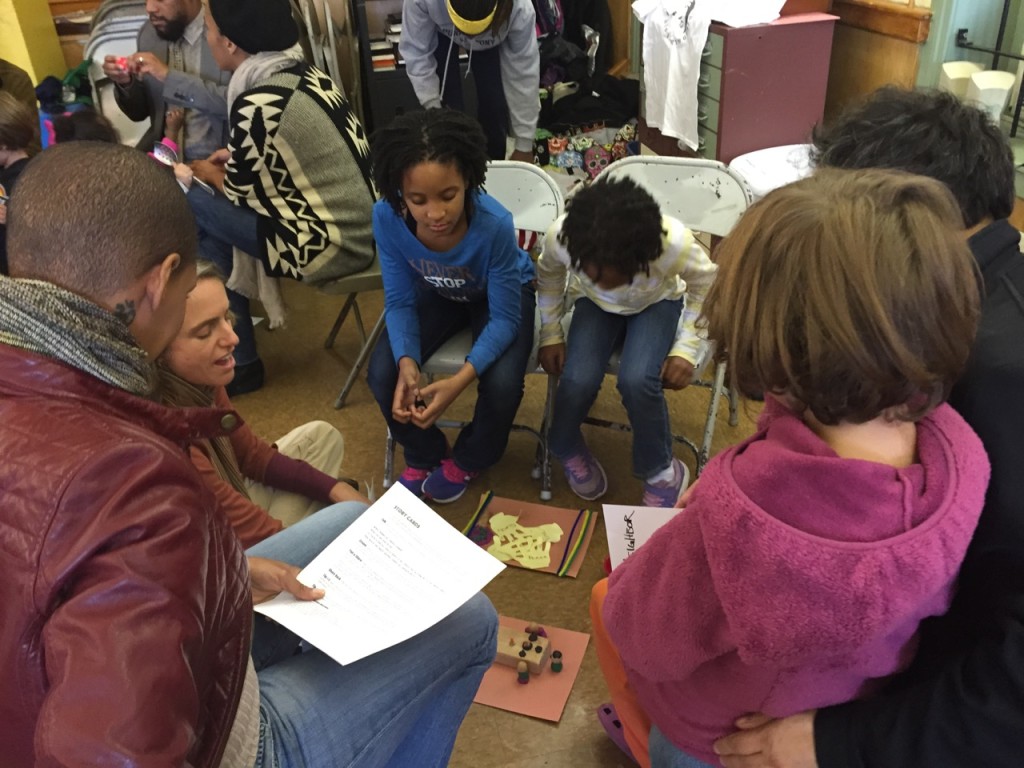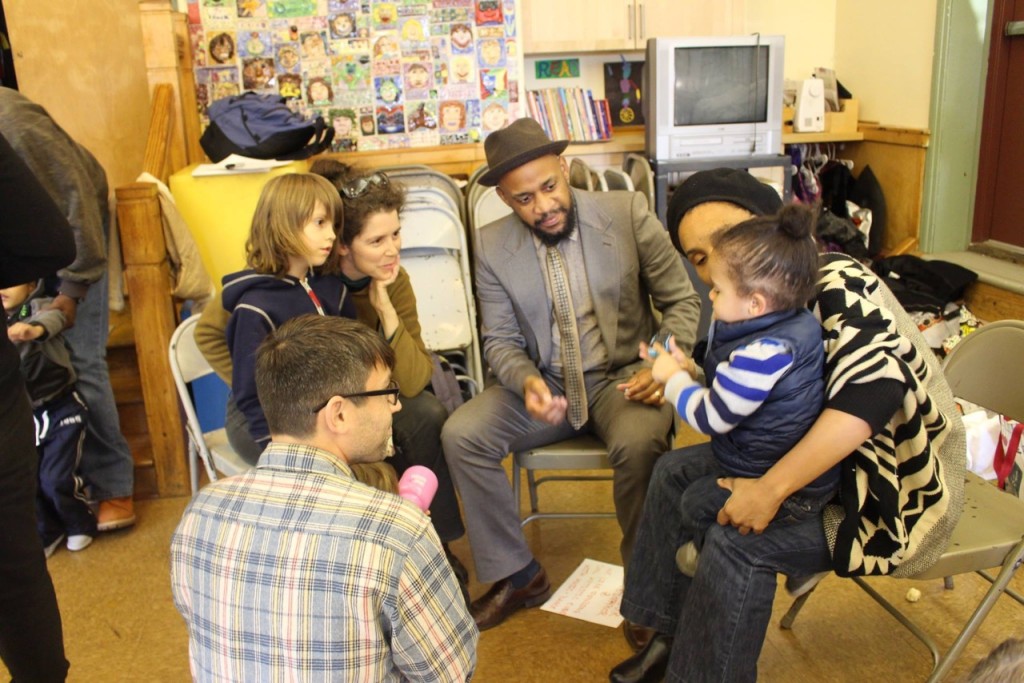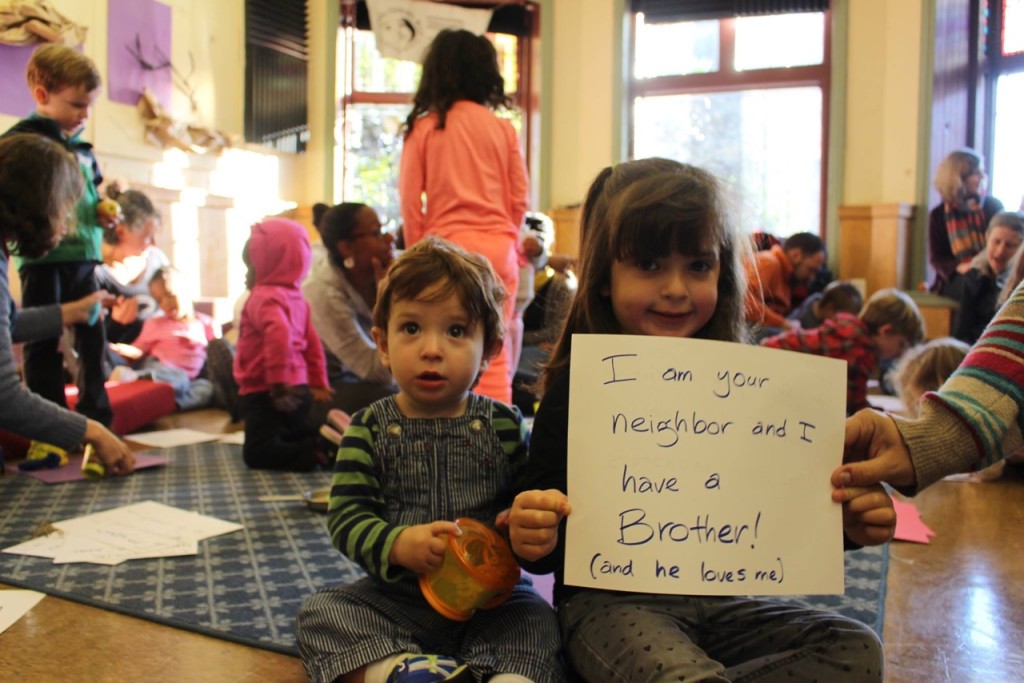If your family has walked or driven through certain parts of Northwest Philadelphia lately, you or your children might have seen signs supporting the #BlackLivesMatter movement. This may feel somewhat redundant in a community like Mt. Airy, which prides itself on being a welcoming and multiracial community.
Mt. Airy is indeed such a community, with people of many races, ethnicities, and walks of life living together in one zip code. So much so, that Oprah published a famous article about it, and many people admit they gravitated to Mt. Airy as a result. But whether you’re in Germantown, Chestnut Hill, or even Mt. Airy, the truth is, we still have race work to do right here in our community.
Despite its beginnings as a response to the killing of Trayvon Martin, the Black Lives Matter movement really came to the national forefront after the high profile killing of Michael Brown. As a mom, I wanted to find ways for my family and my children, to respond, rise up, and be part of the change.
But after attending a nighttime march downtown with my kids in tow, it became clear to me that not all marches are kid-friendly. After talking with some other like-minded parents who also wanted opportunities to speak out, the idea of the Philly Children’s March was born.
Our first Philly Children’s March had us marching through the streets of Mt. Airy on a cold, wet, blustery day last January, with horns honking and children chanting, “Black Lives Matter, Love and Justice!” Since then, we’ve held a second Baltimore solidarity march, marched as a family contingent in the large MLK D.A.R.E march, held house meetings, playgroups, community gatherings, attended book and gallery events, and more. In short, the Philly Children’s March is building a community of families who see color, question privilege, and rise up for racial justice.
Most of the names we speak and the work we do at the marches has been connected to tragic events turned into national stories. They did not happen in our zip codes. Yet during the past month, we’ve been reminded of the work there is to do right here in our own backyard.
Black Lives Matter in Northwest Philly
Within the last month, we’ve had a father in our group detained and racially profiled in a local store and three incidents at homes in Mt. Airy and Chestnut Hill with Black Lives Matter signs. One family received a scathing anonymous letter, another had their sign trampled, and a third family had a toxic chemical thrown on their sign.
Families in the group responded to the racial profiling incident by talking with their children and asking what, if anything, children wanted to do about it. When Tia Mathisen shared the story with her five year old daughter, Reece wanted to go in and talk to the people at the store. “I suggested we take a letter or picture that she drew, but she asked if she could go and tell them. This was her protest, and I didn’t want to make her feel she needed to hide.” Just one month after starting kindergarten, Reece stood up and told the store manager that she felt the way the man had been treated in their store was wrong.
Talking with children about the sign incidents poses a different challenge. While the signs proclaim the rally cry of the movement, they are still lawn signs. Trying to work with children to craft a response that doesn’t focus too heavily on the signs themselves will be an important step forward. Group members Julie Markowitz and Amy Ignatow raised the sign issue both online and at a recent gathering, and older children and adults from the group will be meeting soon to discuss what the signs really mean and ideas for how to respond when signs are vandalized.
How do we move forward?
On Sunday October 18, twenty families gathered together for a Philly Children’s March family gathering. The group consisted of about half white families and half black or multiracial families. After some free play time, the families participated in a “Step to the Middle” activity to identify things they had in common. “Step to the middle if you like pizza! Step to the middle if you’ve been to a march!” After the warm-up activity, Roberta Frempong reported on all the work the group has done since January.

Then parents and children settled in to listen to Tia Reece Mathisen read Let’s Talk about Race, a picture book by Julius Lester. Lester believes that “Everyone has a story” and that “Race has a story, too.” In one part of the book, he asks readers to touch the face of a person who looks different than they do and feel that they both have the same cheekbones underneath. Looking around the room, kids and adults were able to talk about skin color with each other and feel this very real example of how we have both similarities and differences.
After the story, families created their own stories using art materials, storytelling, music, or dance to share with another family.
Black and multiracial families were paired with white families so that they could get to know each other as neighbors, share stories, and interview each other about what makes them unique, favorite pastimes, and what worries they have as families.
Each person in the room was also invited to fill out, “I am your neighbor and…” statements with photos to keep that connection growing.
The day ended with a powerful chant (video link) by Nia Dixon, “Peace. Love. Respect. For everybody. All the power that has ever been, is right here, right now, inside of me, inside of you. I am because you are, and you are because I am. Today I choose freedom.”
Do we have work to do, right here in our community? Yes, we do. But even with children as young as fifteen months old, we’re beginning to address it.
For more information about the mission and community of the Philly Children’s March, please visit our website or our Facebook page.



